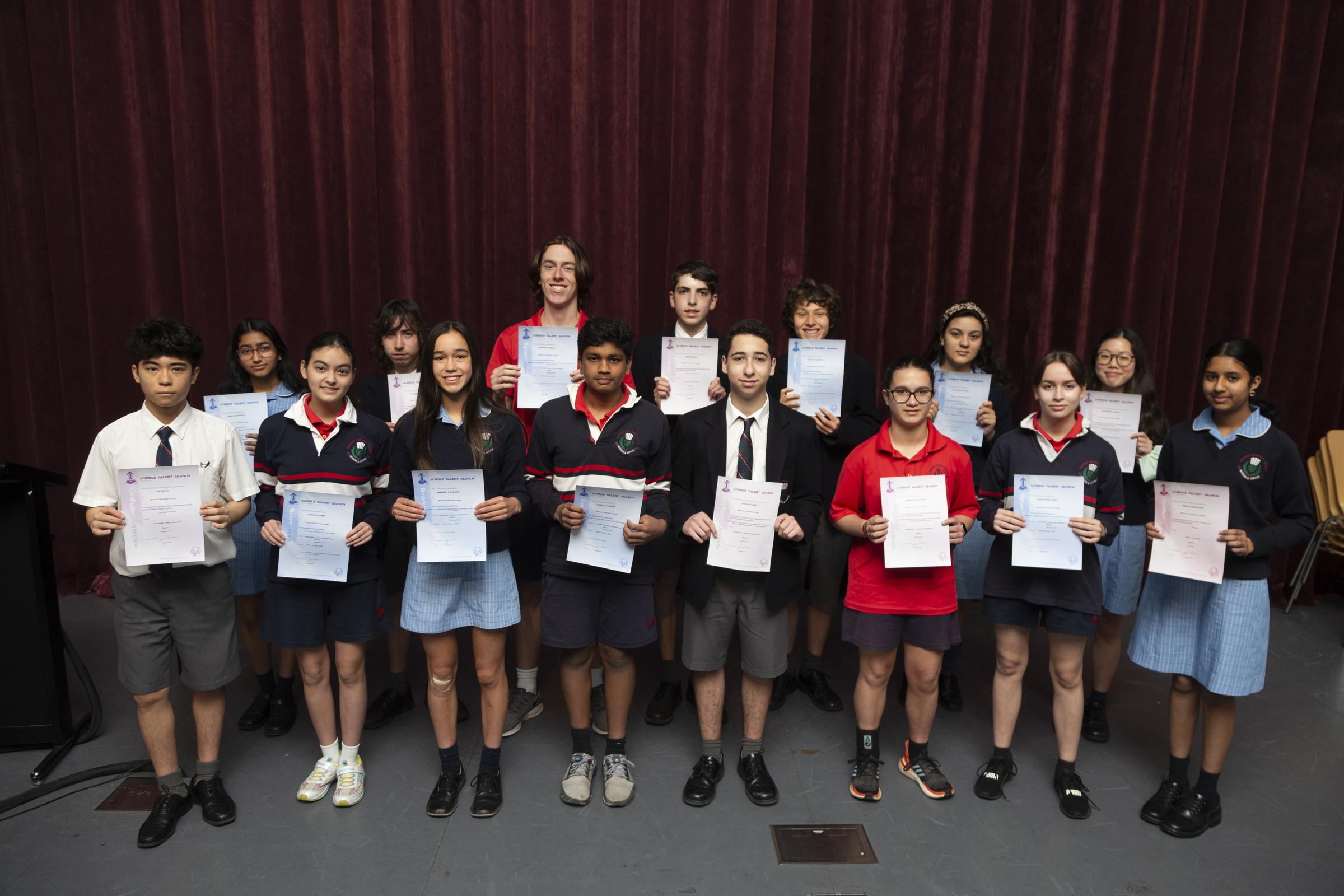SCIENCE

SENSATIONAL SUCCESS AT THE SCIENCE TALENT SEARCH COMPETITION
Students and teachers have been recognised with a multitude of awards in this year's Science Talent Search competition. Science Talent Search is an annual science competition open to all primary and secondary students in Victoria. The theme for 2020 was ‘Deep blue: Innovations for the future of our oceans ’. Eighteen students submitted their projects into the competition. Of these eighteen, eight students were awarded individual bursaries totalling $1815, nine were awarded distinctions and there was also one merit. These students will attend a virtual Presentation on Monday 16 November to celebrate their achievement.
The dedication and consistent work of the students and our Science staff - Mrs Therese Sweeney and Ms Kerryn Scott, were also rewarded the Peter Craig School Award, which recognises the high quality of entries submitted over the breadth of sections in the competition. An amazing achievement! Thank you to the students and teachers, particularly Ms Kerryn Scott, for their tireless efforts and organisation.
Summaries of some of the projects undertaken:
For my STS Experimental design, I created an experiment in which I tested how the roasting and boiling time of a potato affected the overall end product through using set measurements to test its fluffiness and crispness. Through roasting 25 individual wedges, each varying in time spent in boiling water and the oven, it was in the end determined that by boiling a potato for 15 minutes and roasting it for one hour, you were given the most fluffy while still crisp result.
I feel through doing the experiment I was challenged in a variety of ways, the most prominent being my ability to think creatively for both an experiment and a way to test the variables. I also got to expand my independence as a great deal of the experiment was left to my own hands. It was overall a fun experience that challenged me and gave me something to do.
Nathan Tyrrell
Year 9 Student
Earlier in this unprecedented COVID era of misinformation and confusion, it was difficult for the public to know the facts on the best way to stay safe from COVID-19, especially in basics such as hand hygiene. I thought it would be opportune and extremely necessary to conduct any experimental research that would shed some light on the efficacy of using hand sanitizer versus ordinary soap and water to combat microbes that commonly lurk on hands.
As this topic has not been given much light in the scientific community, I thought it would be ideal to research for my STS project. From my experimental research, I found that the proper use of basic soap and water to wash one’s hands was more effective than hand sanitiser due to its unique ability to remove dirt and other small spots that harboured microbes. Overall, I had a lot of fun doing my STS project as it was a very enjoyable and eye opening experience, which successfully provided useful and valuable information in the field of infection control, especially when there is a pandemic around.
Cathleen McLeish
Year 9 Student
For my Experimental Research project, I studied how the availability of oxygen affects the growth of yeast cells, by comparing the height of foam produced by yeast inside a sealed bottle and an aerated bottle, for a period of eight hours. The results showed that the yeast inside the aerated bottle produced more foam, thus showing a positive correlation between oxygen availability and foam production.
Ariel Golembo
Year 9 Student
I based my experiment on trying to determine the effect of water temperature on the growth of sourdough starter. When sourdough starter is given flour and water in a process called “feeding”, the starter grows in size. The speed of the growth is impacted by various factors, and it was this rate of growth that I examined in this experiment. I hypothesized that warmer temperatures of water when fed would increase the speed of growth. Six equal amounts of sourdough starter were fed equal parts of flour and water, with varying temperatures of water.
They were left for six hours with the growth recorded hourly. The sourdough starters that had been mixed with the hot water showed faster rates of growth in comparison to the cold room temperature water sourdough starters, as well as larger mass overall due to the higher temperatures resulting in higher rates of activity in regards to the bacteria and enzymes. In spite of this, past an optimal point the hot temperatures become detrimental and can result in the bacteria of the sourdough starter being denatured or killed. The Science Talent Search was a valuable experience and I was glad we were given the chance to participate, even if it was only in lockdown.
Aleksandra Simic
Year 9 Student
Cherie Marks
Head of Science
